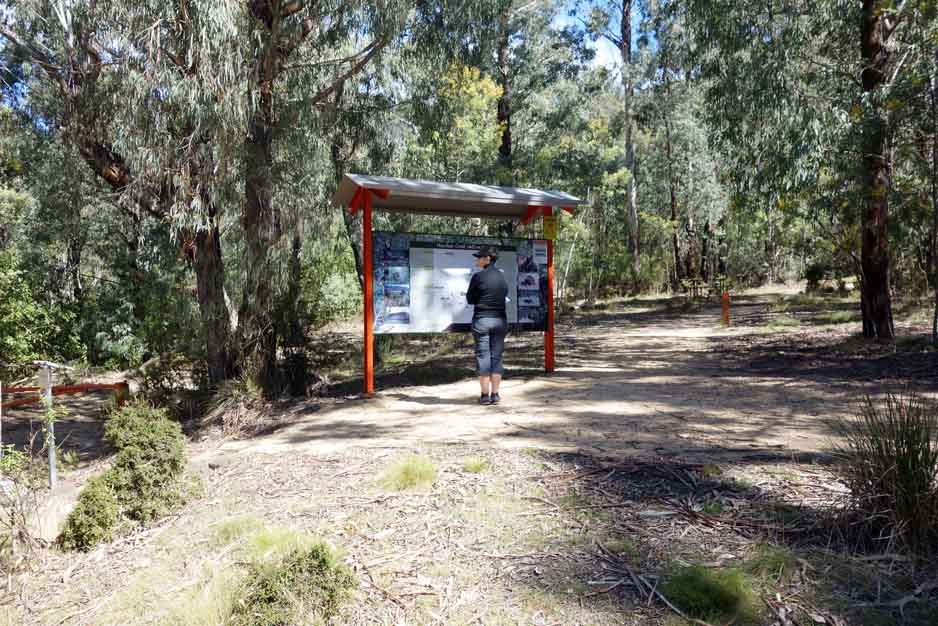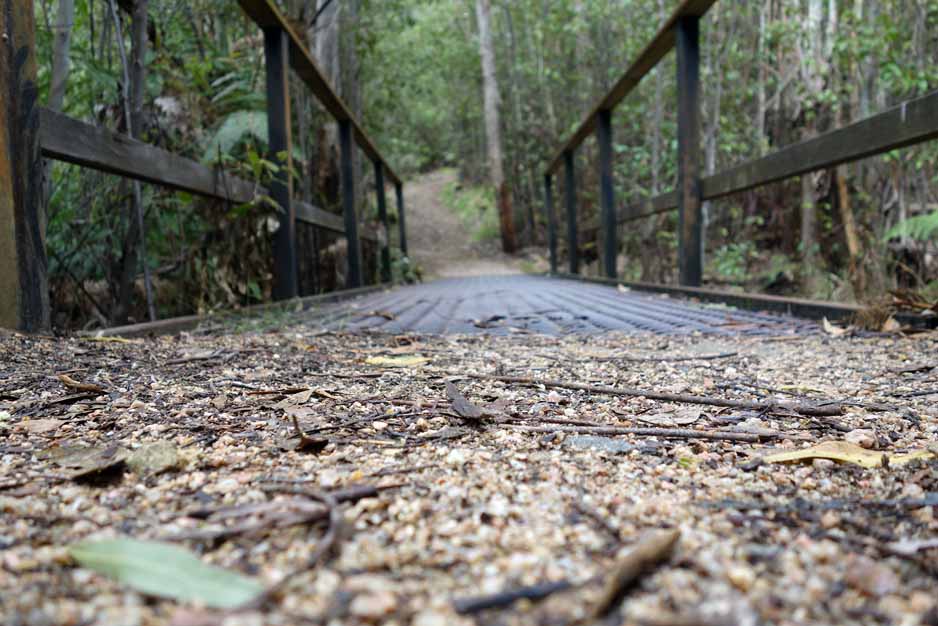Cascades Trail ACT (1.8km)
Tidinbilla Nature Reserve
Nearest Town
Canberra
Starting Location
Mountain Creek car park, Tidbinbilla Nature Reserve

Entry to the Mountain Creek car park is well signposted. There is parking for about 25 plus cars as well as a solitary picnic table
Finish Location
Mountain Creek car park
Best Time to Travel
Year round although a day or two after heavy rain would be ideal. If you go in Summer be advised that this walk is closed if there is a total fire ban
What's special?
A short pretty walk accessible for all the family
Cascades Trail Review
The Cascade Trail walk is only 1.8 km but is well worth doing in its own right, as a second walk of the day, or combined with the Lyrebird Trail to make a 3-4 km walk for both. Once you enter the reserve you drive past the Dalsetta car park (the best chance for a toilet stop) and keep travelling on the loop keeping to the right on the two times there is a branch off. There is signage directing you to the car park so even if you go the wrong way on the loop, you will end up in the right spot. Be warned here that the road will be closed during periods of total fire ban.
The walks starts at the Mountain Creek car park and from a facilities point of view there is not much there. Apart from a solitary picnic table there is a trail head sign which details the four walks you can do from this location including the slightly longer Lyrebird Trail and the much longer and much more difficult Camels Hump Walk.
This trail has good directional signage and there is really no chance of getting yourself lost. Sign in at the trail logbook about 20-30 metres into the walk and off you go. This trail has an altitude increase of 100 metres which surprised us. While its not a difficult walk you will need to take the upward parts slowly if you are unfit. From trail register you’ll walk uphill to the fire trail about 80-100 further on where you turn right to do the Camels Hump walk or veer left for the Cascades Trail and Lyrebird Trail.
The Cascades Trail is quite wide so its one of those rare trails that allows you to spend time walking side by side with a partner. Once you cross over a bridge you come to a directional marker that points you to the Cascade Trail loop (veer right) or left for the Lyrebird Trail. It’s at this point that the trail becomes very lush and moist and takes on the ‘bush smell’ that just makes you feel alive. The trail heads uphill through a dense canopy of foliage and once you reach the high point on the trail you start your descent into the ‘cascades’ where the trail gets its name. This is a creek that runs down hill dropping over a series of rocks. From here the trail heads back to the main path and you can either return to the car park for an approximate 1 hour walk or turn right and continue on the Lyrebird Trail.
This walk can only be described as pretty. Its not long at 1.8 km, doesn’t really have any spectacular views, but has lots to keep macro photographers very happy. This walk is well worth doing particularly if you don’t have a lot of time and want to rejuvenate your soul.
Please note that this trail recieved an upgrade in the first half of 2020.

There are limited facilities at this car park – one picnic table

Interpretive sigange at the trail head explains the walk and others that leave from this area

The trail head sign mentions the ‘breath of pure mountain air’ of this area and this trail just smells fresh and natural

There is a trail register just after you start the walk, please fill it out, and sign back in when you have finished

This trail signage is located about 100 metres into the walk. Veer to the left slightly, crossing the fire trail before continuing on the trail

Veer to the left and cross over the fire trail. The path across the road is not signposted but is obvious

This trail has small sections of dryish trail but most of it is dense and moist. This trail is also a rarity as you can walk side by side for large sections

There is limited signage information signage on this trail but this one notes the possibility of lyrebirds (mainly winter). On our walk we could hear them but we didn’t see any

There are a couple of small bridges along this well maintained trail

The trail branches at this sign. You can either go to the left and do the Lyrebird Trail or to the right for the Cascades Walk

Once you have veered on to the Cascades Trail, the vegetation becomes denser and lusher

Once you have reached the high point on the trail (a climb of 100 metres in total) you will start descending past a series of drops following the creek bed that gives this trail its name. This would be an ideal walk about a day after heavy rain
Getting There

Image from Google Maps
The trip from the centre of Canberra is approximately 1 hour and 50 km. Once you enter the nature reserve itself travel to the Dalsetta car park (stop here for a toilet break if you need to) then continue on the loop road taking the right branch each time you have the option. Mountain Creek is well signposted so as long as you are reading the signs you won’t have any problems.
The Tidbinbilla Nature Reserve contains a series of walks that are closer to Canberra than those at nearby Namadgi National Park. Many of the Namadgi walks, particularly those that go into the Bimberi Wilderness Zone, are more remote requiring a higher level of skill but with it a higher degree of seclusion whereas the Tibinbilla walks are easier to access but you are unlikely to be alone on the trail.
Vehicle access into the reserve requires a permit which ranges from a single visit at $15.53 per vehicle with up to eight people or $42.58 per year. If you are a keen walker it’s worth buying the annual pass as it only takes three visits over the year to make it economical.
If you have an annual pass you can enter the park via the boom gate and scan you pass from as early 7:30 am in the morning and you will need to be out by 6:00 pm at the latest (8:00 pm in summer). If you are buying a single entry into the park you will need to wait until the visitor centre opens at 10:00 am (9:00 am in the summer).

Entrance to Tidbinbilla Nature Reserve

Tidbinbilla Visitor Centre and boom gate. If you have an annual pass you can just swipe your card for access without having to enter the visitor centre
Things to Know
- Phone: There is no phone signal on this track
- Water: There is a water bubbler at the trailhead
- Toilets: The closet toilet is at the Dalsetta car park which you pass on the way to the Mountain Creek car park
- Trail: This trail consists of formed track and management road
- Dogs: Dogs not allowed
- Other:
- Tidbinbilla Nature Reserve requires a pass to enter with your car (with up to 8 passengers)(30 November 2024) The annual pass is $42.58 and if you plan on doing at least three visits over the year is the cheapest option
- A day pass is $15.53
- The reserve is accessible before the visitor centre opens if you walk in or have an annual pass
- The visitor centre sells snacks if you need
- This trail is closed when there a total fire ban
- Tidbinbilla Nature Reserve requires a pass to enter with your car (with up to 8 passengers)(30 November 2024) The annual pass is $42.58 and if you plan on doing at least three visits over the year is the cheapest option
Disclaimer
This walk was undertaken by the team from Australian Hiker